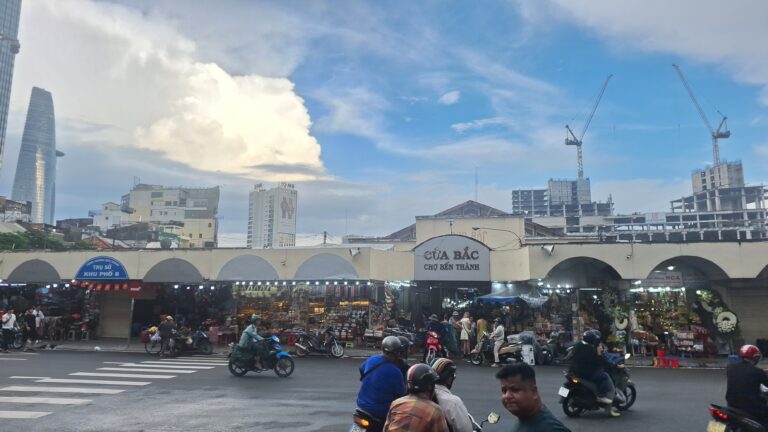
Home > Blog > Destinations > Vietnam Location Overview
Vietnam Location Overview
Share:
- Published:
- Updated: 20/01/25

Table of Contents
Vietnam Location Overview
Vietnam may look small but its unique geography provides a great deal of variety in riding destinations. From mountains to valleys, forests to beaches, Vietnam’s scenery will not disappoint. To begin, it’s easiest to divide the country into three regions when considering where to ride.
The North
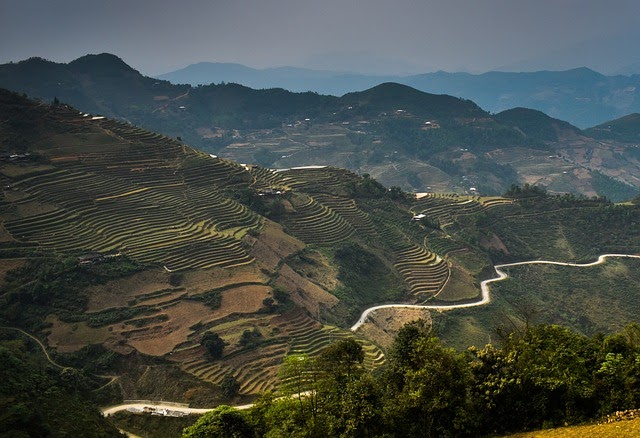
North Vietnam’s urban environment is centered around the capital, Hanoi, the port city of Haiphong, as well as the agricultural Red river delta. The lowlands of the north are densely populated and boast a long heritage of Vietnamese history and culture.
The roads that motorcycle adventure riders come for, however, are in the mountains. Riders can explore the steep mountains of Ha Giang or the stepped rice paddies of Lao Cai or Sapa. The border with China is remote and wild, with local hill tribes occupying the mountainsides and narrow valleys.
Attractions
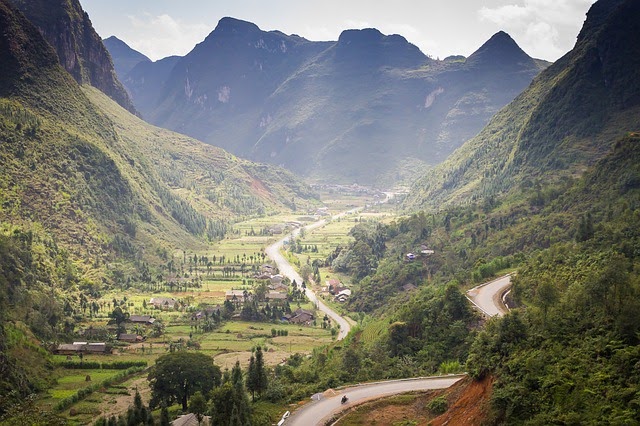
The north also boasts attractions such as Fansipan, the highest mountain in Indochina at 3,143 meters, and the famous Ha Long Bay, with its countless limestone islands. Historical sites are plenty, including Dien Bien Phu, which saw the French army defeated by the Viet Minh in 1954.
Weather
Vietnam’s north experiences strong seasonal shifts in weather, though any time of year is feasible to enjoy a trip. The period from April/May to October is hot and humid, with frequent rainstorms. In some areas, especially lowland areas or valleys, temperatures can climb to 40 degrees Celsius, though they don’t always.
October to April is cool and also humid, with occasional typhoon strikes along the coast. Coastal provinces south of Hanoi as well as the capital itself have experienced strong storms over the last few years.
The northernmost reaches of the country can get significantly cold in winter, with snow falling once every few years. For the Vietnamese, snow falling is an event that may spark a tourist rush since snowfall is so rare.
Hanoi itself is no stranger to cold weather either, nor are most of the northern provinces. Temperatures may hover around 15 degrees celsius through from December through February. Althugh this is certainly not cold when compared to many other countries, recall that humidity is high and most houses are poorly insulated. Bring warm clothes if you intend on coming to the north then.
The north of Vietnam, the country’s historical and cultural heartland, has just about everything a motorcycle adventure rider is after.
If you’re into seriously impressive mountains, wilderness, and exciting roads, do yourself a favor and check out the north of Vietnam.
The Center
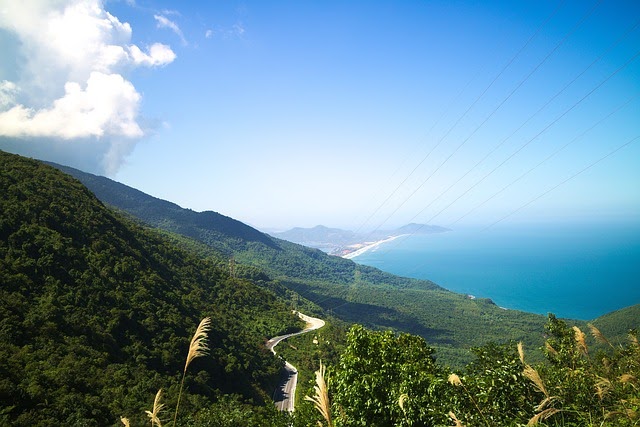
Central Vietnam is home to a great diversity of landscapes and cities. The largest city in the center is Da Nang, but other major cities include Hue, Hoi An, Quy Nhon, and Nha Trang.
Vietnam’s central coast is attracting more and more international visitors every year as it gains in notoriety. Hundreds of miles of beaches line the shore, punctured by steep mountain passes, forests, and fishing villages.
In Vietnam’s center can be found some of the most iconic roads in Vietnam, including the Ho Chi Minh Trail and the Hai Van Pass. The region bordering Laos features breathtaking mountains and unspoiled forests, with roads that are rarely traveled by westerners. Many of the roads in the central region are new and are thus in great condition.
Since most of the population in the region is concentrated along the coast and in fertile valleys, most of the mountainous or remote parts of this region are sparsely populated. This makes for open roads on some impressive drives.
For history buffs, the central region also bore witness to some of the fiercest fighting of the war. The DMZ, large sections of the Ho Chi Minh Trail, Khe Sanh, and many other important sites during the war can be visited here.
Weather
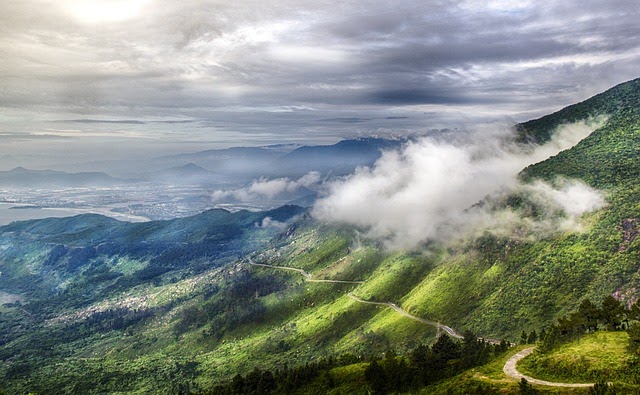
Central Vietnam essentially experiences four seasons, though not like those in more temperate climate. From February/March to June is the dry season, with fresh, comfortable weather that gets warmer as summer approaches. June to October is the wet-hot summer, when rain is frequent and temperatures are high. Storms are welcomed since they often last long enough to cool temperatures down, which can reach 38-40 degrees celsius.
September to November is the beginning of the rainy season in earnest. Days during this period can be beautiful, or massive storms can wash in from the ocean to the east as the monsoon begins. If there are tropical storms to hit central Vietnam, this is normally when they do.
December to February, and occasionally through February, is rainy and cool. Temperatures hover around 20 degrees, though occasionally they can go lower and higher.
Attractions
The central region of Vietnam boasts some of the country’s best views and traveling, which is why Onyabike Adventures has chosen Da Nang as its headquarters. Come see what the fuss is all about!
The South
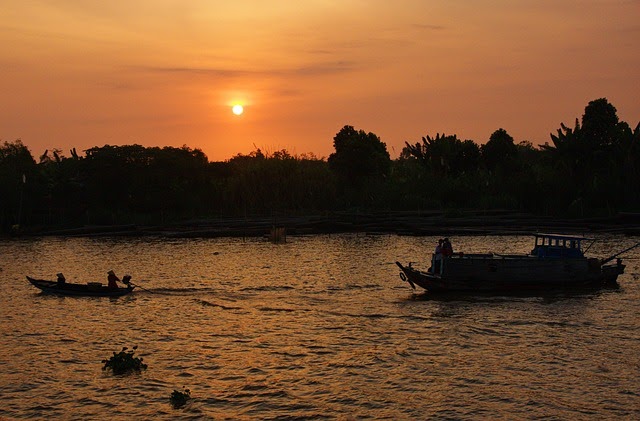
Ho Chi Minh City is the human epicenter of Southern Vietnam, as well as its satellite cities of Bien Hoa, Binh Duong and Vung Tau. The Mekong Delta boasts large cities as well, especially Can Tho, famous for its floating market.
A major destination for many riders is the Mekong Delta. Roads through lush greenery cross countless rivers and canals, lending a truly tropical feel to the ride. Here can be found some of the richest agricultural lands in all of southeast Asia, and although the region is thoroughly peopled it’s easy to feel off the beaten track here.
Another popular destination is the central highlands, especially the hub of Da Lat. A steep increase in elevation from the lowlands produces an almost alpine feel in places, with pine trees as evidence of the cooler weather. Much of Vietnam’s produce is grown here, especially produce that requires cool temperatures. Rides through the area can give spectacular views over sweeping, forested valleys.
Weather
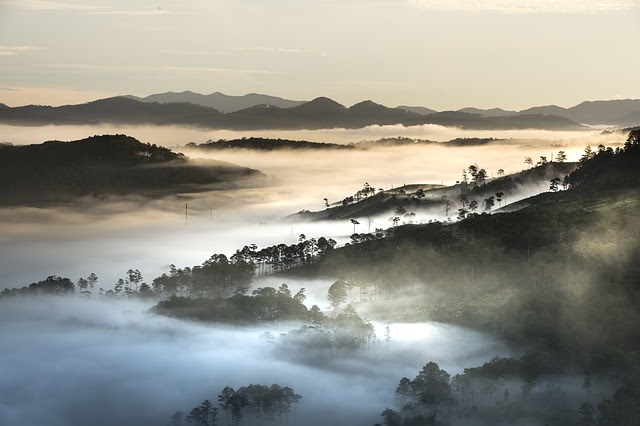
The south is thoroughly tropical in that it never gets cold. Temperatures in this region rarely, if ever, fall below 20 degrees celsius. Inhabitants of this region joke that there are three seasons: hot, really hot, and rain. All of these seasons are quite suitable for adventure riding.
The period from December through March sees generally beautiful weather, with temperatures hovering in the mid to upper 20’s celsius. April and May get hot, with temperatures occasionally climbing to 40 degrees. Storms to break the heat begin anywhere from May to June, which marks the beginning of the rainy season. Rain truly picks up in September, with September through November being the rainiest months. Storms in the south are awe-inspiring, with dramatic clouds and numerous lightning strikes.
Riders would be remiss to not include the south in their itinerary. Its diverse offerings and exotic feel found in the countryside lend themselves to a truly unique experience.
Recent Posts


